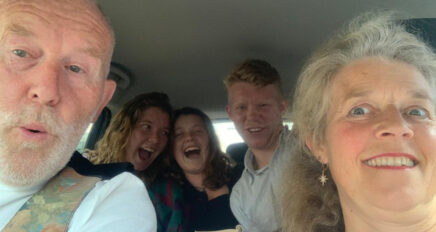For many of us sweating, stretching and defining ourselves through exercise and sports is crucial for our emotional and mental well-being. Jane Fonda coined the term ‘going for the burn’, to point to the release of endorphins, the after-glow, the feel good factor of a satisfying work-out.
When it comes to childbirth, there doesn't seem to be the same cultural encouragement to do what our bodies are designed to do. There is an assumption that being with pain in childbirth is something to be avoided. The question is not “will you use pain relief?” but “which one and when”. Choosing to birth without pain relief could be seen as extreme as opting for dental work without anesthetic.
Mums may decide ‘to wait and see’ or ‘give it a go’ but if they are with a team who believe it is their job to offer pain-relief, it will take a strong person to resist.
Being with pain in childbirth is very different from being with any other type of pain. Reading the standard definitions below it is a wonder that it is called pain at all:
“Highly unpleasant physical sensation caused by illness or injury.”
Or again
“Pain is an unpleasant sensation and emotional experience that links to tissue damage.”
Or
“Pain is an uncomfortable feeling that tells you that something is going wrong."
‘Illness, Injury’, ‘tissue damage’, ‘something going wrong’... those are not the sensations that women speak about in normal labour.
Independent birth educator and author Rhea Dempsey reminds us that a growing number of women want to experience natural physiological childbirth. They don't want to by-pass, avoid or be saved from pain they want to engage with it. Rhea reminds mums that there will be a series of "predictable low times of self-doubt where they may lose all belief in their bodies capacity to birth naturally." If there is a map drawn out and these crises of confidence are discussed ahead of time, it will make it so much easier for a woman to ride the waves.
“In many cultures across time”, Rhea writes, “the challenging journey of pregnancy and birth, was celebrated and honored as a transformational process, ‘ a rite of passage’.”
Each birth is unique and I am not suggesting that we should all bite down on our sticks and tolerate unendurable pain. My wish is simply for families not to miss out on the joy and power of birth.

Normal physiological pains of childbirth are accompanied by the release of powerful hormones. For women who have the right support, they will find that as they meet the pain, (call it a wave if you like!), they will experience the release of endorphins and oxytocin. High levels of oxytocin drive the contractions, the resulting sensations or pains are progressive and useful. For the birthing woman who has the chance to stay in her ‘zone’ she will discover that her body will enable her to birth from a much more instinctual place. Remembering too that she will soon meet her baby.
For those that choose or need medical interventions, there are many ways to engage more fully with the process. Birthing in a way that includes the baby’s experience of birth as well.











